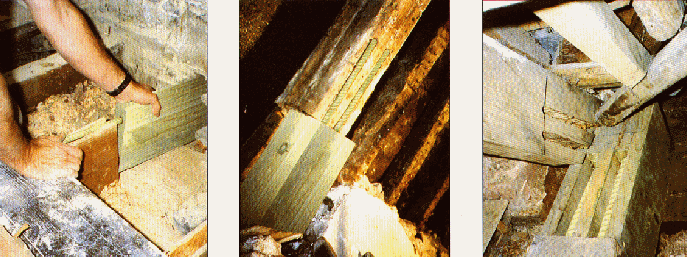|
Structural timbers within buildings come in all shapes and sizes, floor and ceiling joists, roof timbers or wooden lintels any timber decay to these timbers can be detrimental to the overall structural soundness of the building.
In most cases these timbers can be removed and reinstated without to much concern for the surrounding areas, however in older properties where covings, ornate ceilings or carved roofing timbers need to be saved or in a situation where a lintel is in need of repair and it is not possible to remove the entire lintel a repair in situ is more favourable.
The solution is the timber resin splice (TRS).
The rotten or damaged end of the timber can be removed with little or no disruption.
A new timber is cut to the shape and size of the of timber to be repaired, this may involve laminating two or more timbers together if the timber is not of a standard size.
Connector rods are then set into the new timber using timber resins.
Slots corresponding to the connector rods are cut into the old sound timber.
The new timber is then offered up to the old timber making any alterations as necessary.
The two abutting surfaces are pasted using a P8 paste.
The new TRS is held in place by wedges and packing as necessary.
Depending upon the types of and access to the repair resin is either pored or injected into the cut slots.
Once dry any support can be removed and making good can be completed.
Below is a brief résumé of two types of TRS, side and top fitting of a basic floor joist.
|
|

